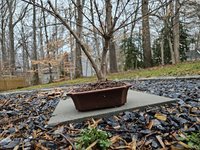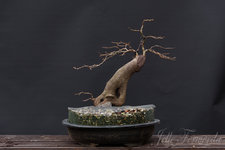JohnFranklin - Zone 7b
Yamadori
So I repotted two maples (one pic is attached) into bonsai pots and this is my first time ever doing so. My question is the soil medium level is convex to the top of the pot and while I've seen more than one like this on the boards, how the heck do you water the tree and not wash away the soil medium? Just water carefully?



